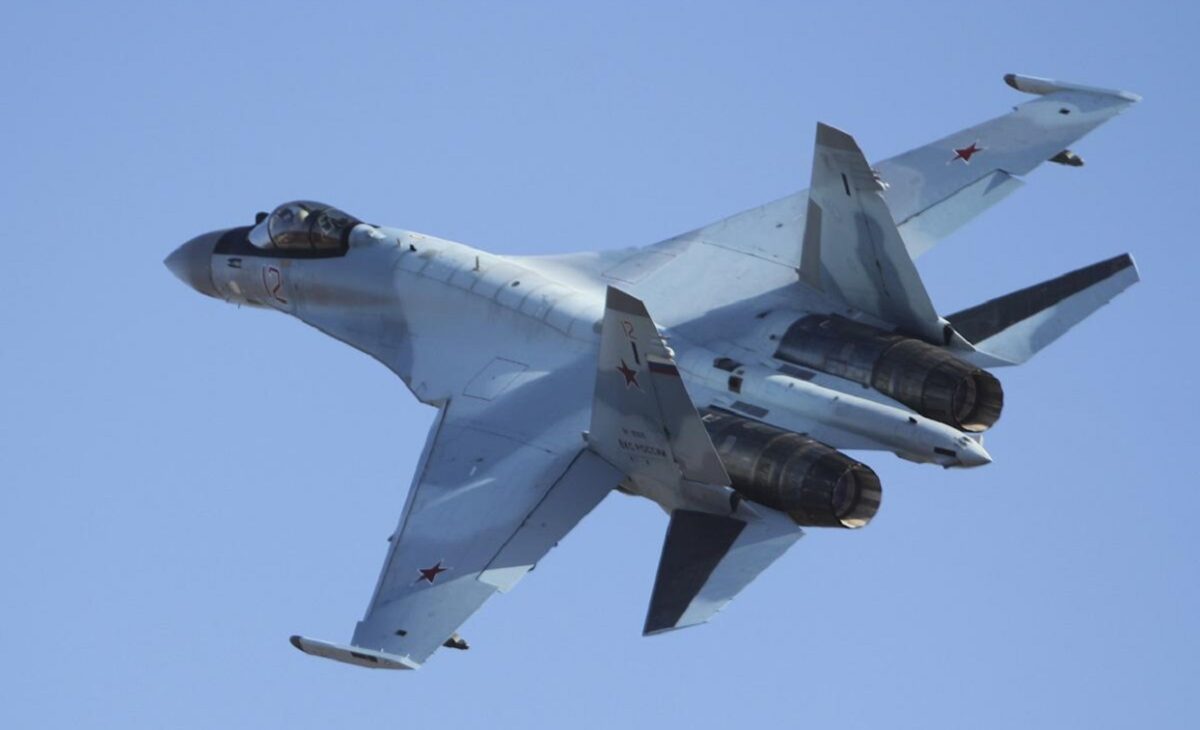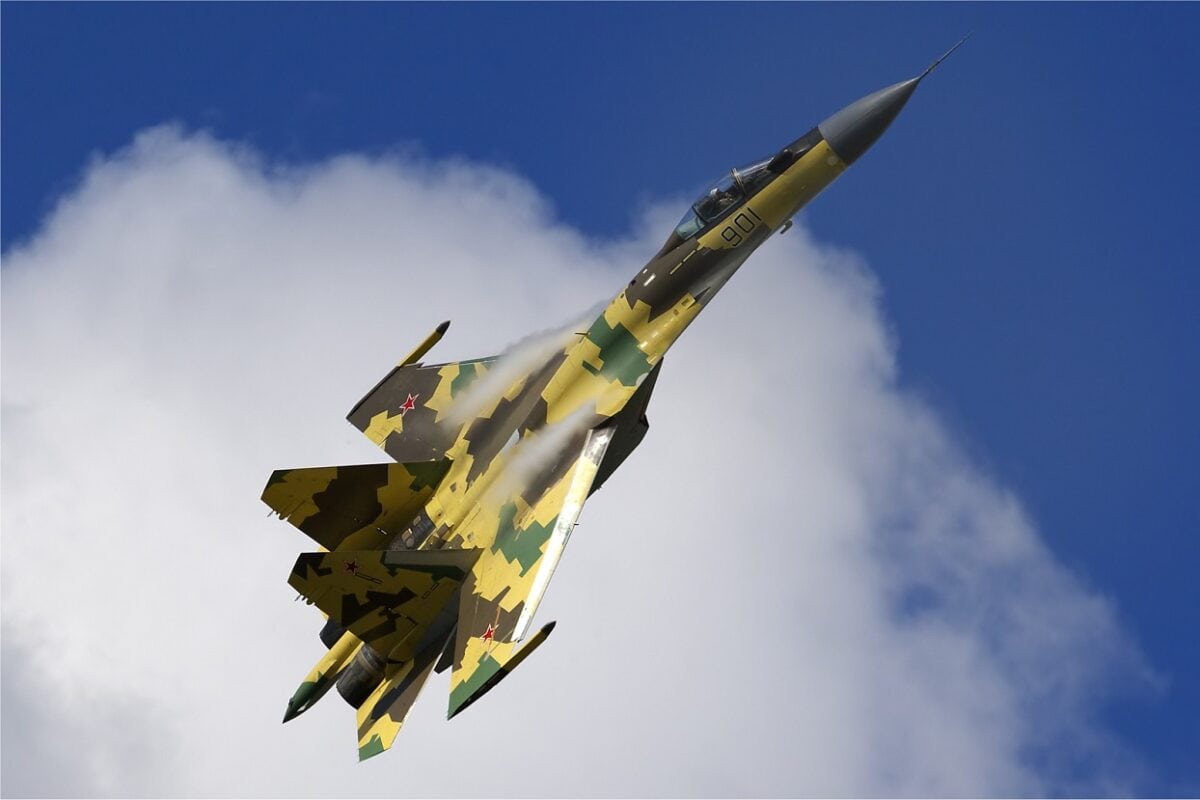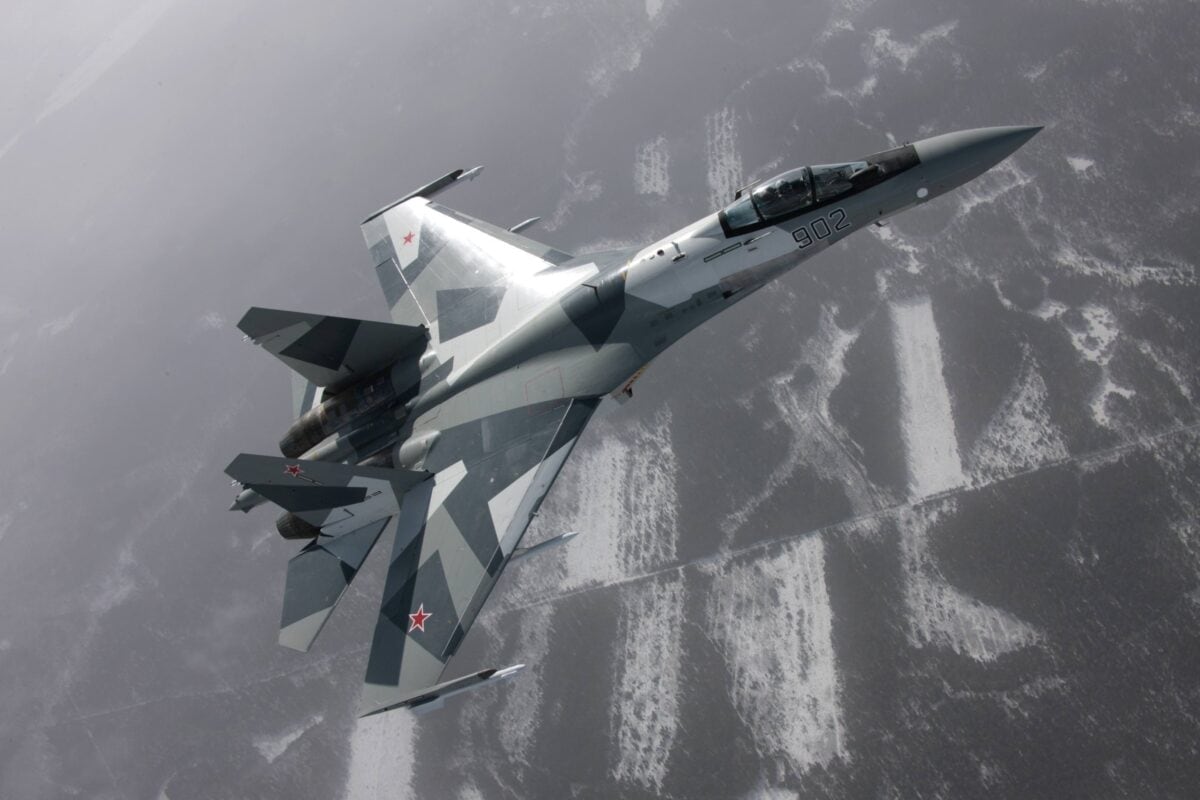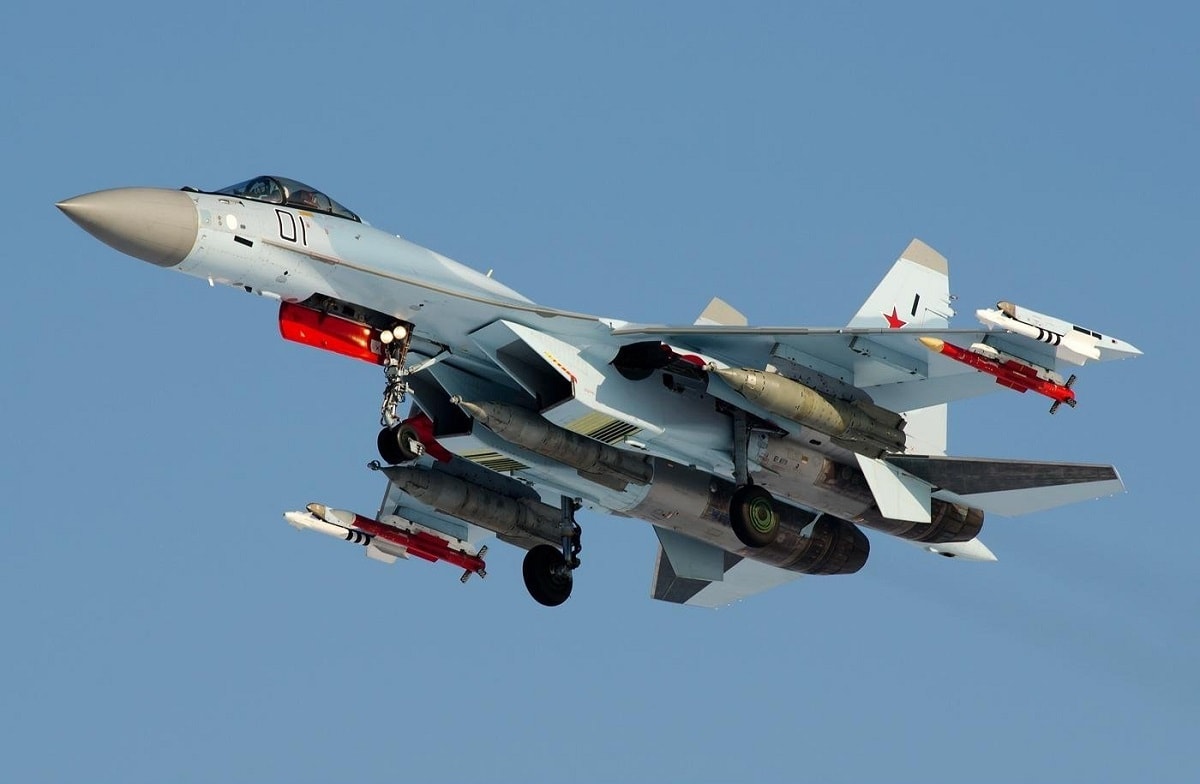The Su-35 is not a fighter jet that the average person would know of like the F-14 that appeared in Top Gun: Maverick just recently. And yet, while not a stealth fighter, she might be Russia’s best fighter yet:
The Sukhoi Su-35 is a reliable workhorse for the Russian Aerospace Forces, and the aircraft has seen heavy use in Russia’s invasion of Ukraine. The Flanker-E, as it is known by its NATO reporting name, is the most modern Russian air-defense fighter in service today.
As a redesigned version of the Su-27 fighter, the Su-35 is a single-seat aircraft designed to take the lead in air superiority and air defense suppression missions. Propelled by two Saturn AL-41F1S turbofan engines, the Su-35 is classified as a supermaneuverable fourth-generation fighter, capable of reaching speeds of up to 1,550 miles per hour.
Sometimes dubbed a “fourth++ generation” fighter, the plane might remain Russia’s preferred tool for air superiority and defense missions until the fifth-generation Su-57 multirole aircraft is developed. The Flanker-E is equipped with a GSh-30-1 30mm autocannon. It has 12 external hardpoints to carry a variety of missile types for air, ground, and sea targets, as well as anti-radiation missiles. These hardpoints can also handle a variety of guided bombs.
An Advanced 4th-Generation Aircraft
Developed by the Sukhoi design bureau, the Su-35 first began development in the 1980s. The aircraft flew for the first time in 1988. Intended to be a supermaneuverable version of the Su-27, only 15 models of the first version of were built. Production was discontinued in 1995, in the wake of the Soviet Union’s collapse.
The Flanker-E in use today is the Su-35S. Its development began in 2003. The Su-35S also trades the early Su-35 versions’ canards for thrust-vectoring capability in its engines, giving it significant maneuverability in flight. While the Su-35S is certainly an advanced fourth-generation aircraft, its lack of stealth technology means it would probably struggle in combat with fifth-generation fighters.
Production of the Su-35S began in 2009, and by 2021, 45 were in service in the Russian Aerospace Forces. Fifty additional Su-35 aircraft were ordered in 2016, and 10 models are expected to be produced each year.
The Su-35 has also seen considerable success as an export. China signed a contract for a total of 24 Su-35 models in late 2015. These were all delivered by 2019 and entered service with the People’s Liberation Army Air Force. Russia was reportedly nervous about Chinese attempts to copy Russian technology used in the Su-35. Moscow had also initially insisted that China buy 48 airframes, but this was negotiated down.
A Politically Troubled Aircraft
Egypt was a prominent early foreign customer of the Su-35, initially agreeing to buy more than 20 of the aircraft. However, under the threat of direct sanctions from the U.S., and tired of Russian requests for extensions on the aircraft’s delivery, Egypt called off the deal. The governments of Indonesia and Algeria similarly shut down their acquisition plans.
Russia struggled to make deliveries due to Western sanctions, and these countries ultimately preferred to avoid sanctions themselves, and to move on from the politically fraught aircraft.
READ ALSO: UN urges India to end religious ‘violence’ and hatred against Muslims
The Su-35 saw some battlefield use in Russia’s air campaign in Syria, but this experience gave relatively little to external evaluators. The campaign simply didn’t provide many chances for the aircraft to test its intended role as an air superiority fighter.In Ukraine, Russian Su-35 pilots have reportedly underperformed in combat against Ukraine’s air force and its air defense assets. Russia has also reportedly lost some of its Su-35 aircraft in combat with Ukrainian MiG-29s and air defenses. Ukrainian military leaders attribute this development to the high skill of their pilots.
The fighters remarkable air superiority and air defense suppression capabilities have not prevented the loss of some models of the aircraft in Ukraine. Nevertheless, the Su-35S and any future iterations of the fighter will remain mainstays of Russian air power.
According to a writing by by Peter Suciu:
Throughout much of the latter part of the Cold War, American fighter jets were largely seen to have an advantage when going up against whatever the Soviets could offer. That included the Su-27, which was introduced in 1988. In the past twenty years, that jet hasn’t seen nearly as much action as the American F-15. But the latest derivative of the Su-27 presents a real threat in the air.
The Sukhoi Su-35S is actually the second improved version of the Su-27M; it is a single-seat, twin-engine, supermaneuverable aircraft. This 35S versions feature thrust-vectoring engines in place of the Su-27’s canards. Designated the “Flanker-E” by NATO, this “4++ generation” fighter has proven itself to be a very capable foe to current U.S. aircraft, including the F-15 Eagle, the F-18, and even the F-35 Lightning II.
The Su-35’s armament includes a GSh-30-1 30mm autocannon with 150 rounds, along with 17,630 pounds of payload on twelve external points. It can carry a variety of air-to-air, air-to-surface, anti-radiation, and anti-ship missiles, as well as a number of TV, laser-, and satellite-guided bombs. By comparison, the new U.S.-built F-22 has just four hardpoints on its wings and three on internal weapon bays.
The twin Saturn AL-41F1S turbofans provide the Su-35 with maneuverability that can easily match or exceed the evasion techniques of nearly all existing fourth generation fighters. With a maximum speed of 1,550 mph and a ceiling of 59,050 feet, it is a well-armed, speedy aircraft.
However, defense analysts have suggested that the Su-35 in its current modified configuration is really a stop-gap measure, at least until the Russian military is able to ramp up production of its fifth generation stealth multirole-fighter, the Sukhoi Su-57.
Fighter Disruption
The threat from the Su-35 isn’t just in what the plane can do in the air, however. This is because the Russian Air Force isn’t the only operator of this advanced aircraft and what it could mean for regional power balances. In fact, the fighter was originally designed for export, but the Russian Air Force became the launch customer in 2009.
Both the Chinese People’s Liberation Army Air Force (PLAAF) and the Indonesian Air Force have placed orders—with the former receiving its initial delivery of four aircraft in 2016 followed by another ten in 2017 as part of a contract for twenty-four aircraft that Jane’s reported to be worth $2.5 billion. The Russian-Sino agreement also included support equipment and spare engines, with the contract to be fully implemented by the end of this year.
After China became the first international customer of the Su-35, the U.S. imposed sanctions on the Asian nation for breaching of the congressionally-mandated Countering America’s Adversaries Through Sanctions Act (CAATSA). Despite this, the Su-34 officially entered service with the PLAAF in April 2018.
Last fall, Turkey also began an advanced stage of negotiations to purchase thirty-six Su-35 from Russia. That move came after Turkey was ejected from the F-35 program and unnerved its NATO allies for purchasing Russian S-400 air defense missiles.
Several other nations have been listed as potential operators of the Russian-built aircraft include Algeria, Egypt, India and the United Arab Emirates. Though just a stopgap for the Russian Air Force, the Su-35 could be a serious disrupter of air superiority throughout the world.


















